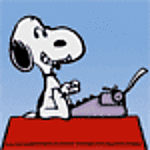1⁄1Eindekker!
8
Comments
history
The E.III was basically an E.II fitted with larger, newly designed wings that had a slightly narrower chord of 1.80 meter (70-7/8 in), compared to 1.88 meter (74 in) on the earlier Eindeckers, going back to Fokker's original M.5 monoplane aircraft. The E.III retained the same 75 kW (100 hp) Oberursel U.I engine, and therefore also used the larger diameter "horseshoe" pattern cowling that also mandated the inclusion of the E.II's soffit-like extensions to the sides of the upper nose sheet metalwork, but had a larger 81 l (21.5 gal) drum-shaped main fuel tank just behind the cockpit, which increased the Eindecker's endurance to about 2½ hours; an hour more than the E.II. Most E.IIIs were armed with a single 7.92 mm (.312 in) Spandau LMG 08 machine gun with 500 rounds of ammunition; however, after the failure of the twin-gun Fokker E.IV as a viable successor, some E.IIIs were fitted with twin guns.Fokker production figures state that 249 E.IIIs were manufactured; however, a number of the 49 E.IIs were upgraded to E.III standard when they were returned to Fokker's Schwerin factory for repairs.
The Fokker Eindekker's influence was felt far beyond its small production numbers. It was the first true fighter aircraft fielded in large numbers and as such changed the conduct of aerial warfare forever.
Adapted from Wikipedia
the model
This model is Revell’s 1:72 Fokker E.III Eindecker as flown by Vizefeldwebel Ernst Udet when he was flying with Kampfeinsitzerkommando Habsheim on the Western Front in the winter of 1915/1916The model was built OOTB and airbrushed with Tamiya acrylics. Including some of the parts that the kit provided decals for like the black and red band on the fuselage. This was my second aircraft I ever seriously built and it was my first try at rigging which I did with thin fishingwire.
The groundworks are made of a foamsheet covered with spackle (the one used to fill the seams between drywallsheets) airbrushed with Tamiya acrylics. The grass is Heki Decovlies. All this is put into a photoframe which was “antiqued” with a foam block and some rough grit sandingpaper. I built this kit for the “Anything goes” campaign here on Aeroscale.
Comments
Robert,
You made the diminutive Fokker into an exceptional diorama. I like what I can see of the cockpit.
MAY 25, 2013 - 12:31 AM
@Jessica.
Thanks for the work you put into this and the additional info. Really nice feature you made.
@Frederick
Thanks for the compliments I'm glad you like it. I'm pretty pleased with this one myself.
MAY 25, 2013 - 08:06 AM
Ola Jim
Well attempting to do aircraft is a better explanation. With an equal amount of screw ups opposing the succesful I'm already happy if something gets finished. Thank god there are some cheap manufacturers.
MAY 27, 2013 - 06:46 PM
Ola Stephen
Thanks for the reply. And I will take your advice... how frustrating it sometimes can be... bloody fragile D.VII wingstruts!!!!
MAY 29, 2013 - 07:34 AM
Copyright ©2021 by Robert Blokker. Images also by copyright holder unless otherwise noted. The views and opinions expressed herein are solely the views and opinions of the authors and/or contributors to this Web site and do not necessarily represent the views and/or opinions of AeroScale, KitMaker Network, or Silver Star Enterrpises. Images also by copyright holder unless otherwise noted. Opinions expressed are those of the author(s) and not necessarily those of AeroScale. All rights reserved. Originally published on: 2013-05-25 02:22:33. Unique Reads: 9168

























